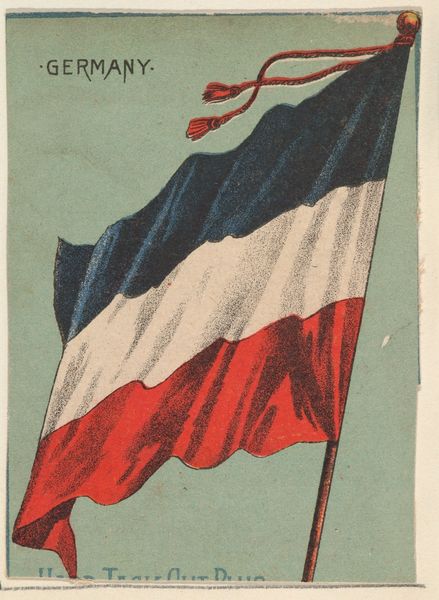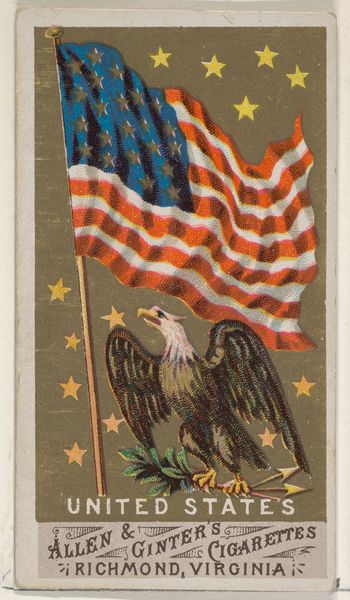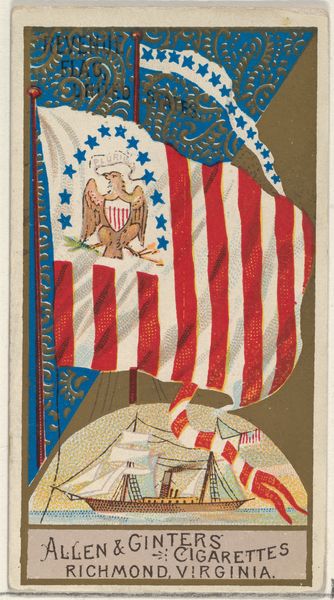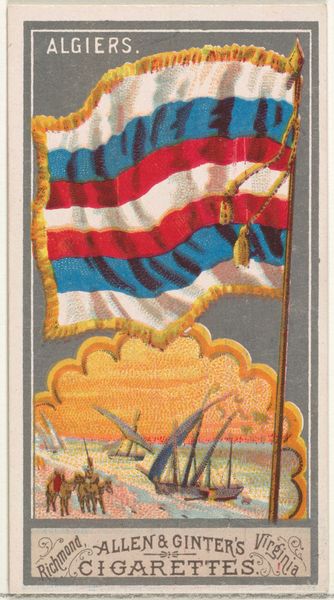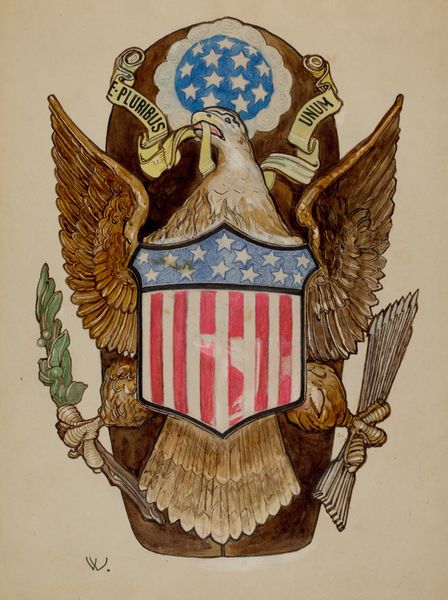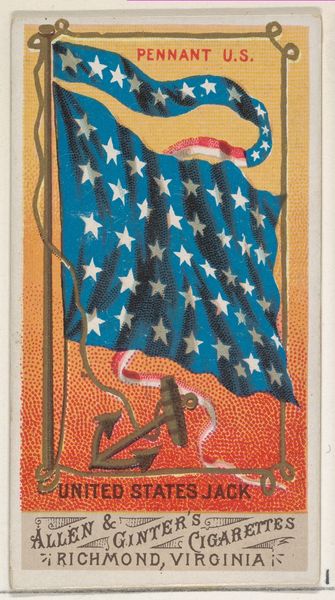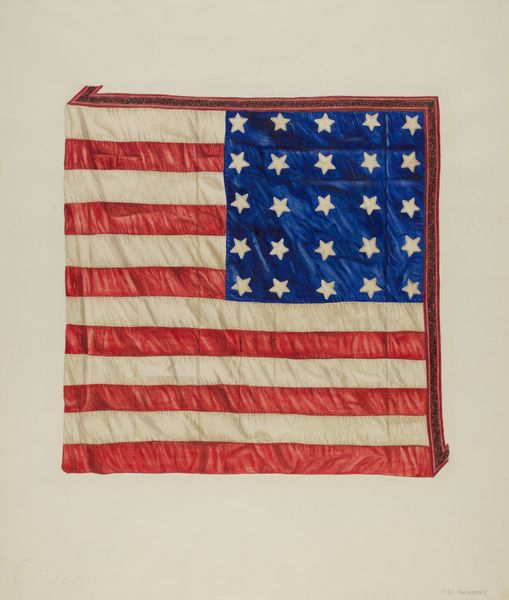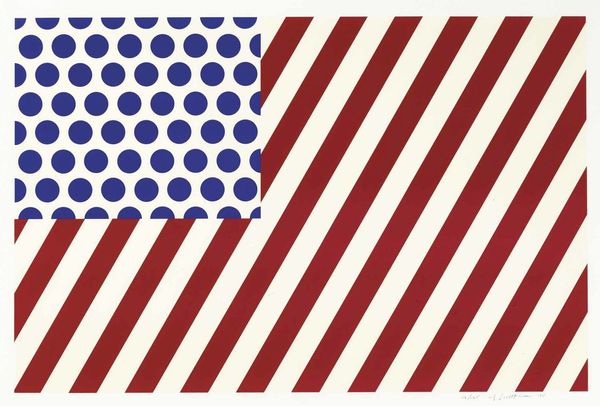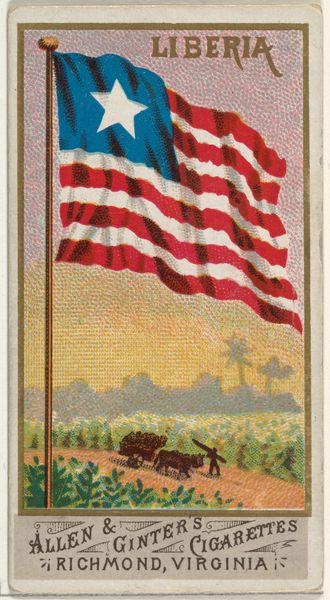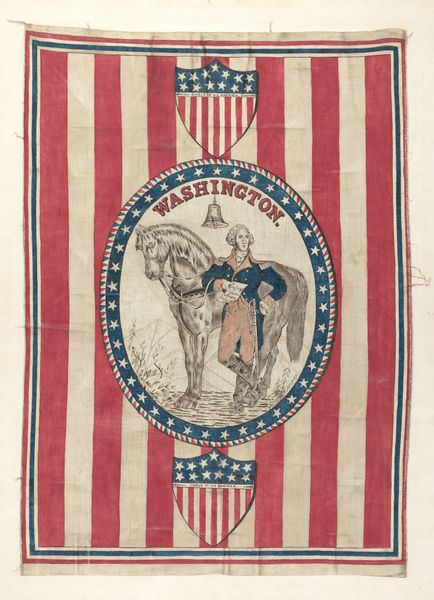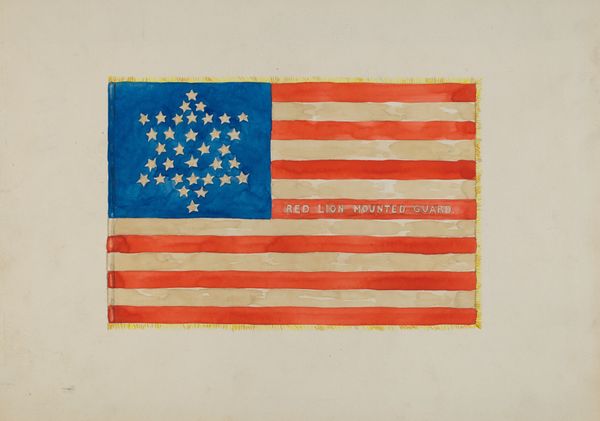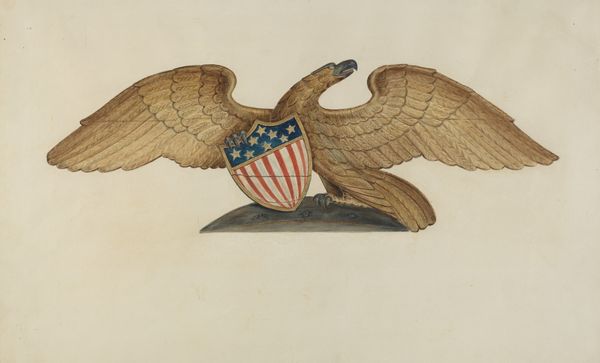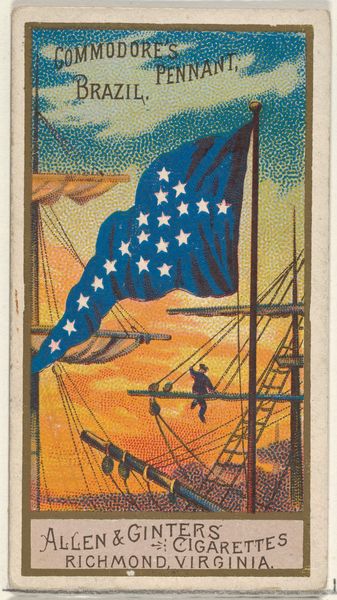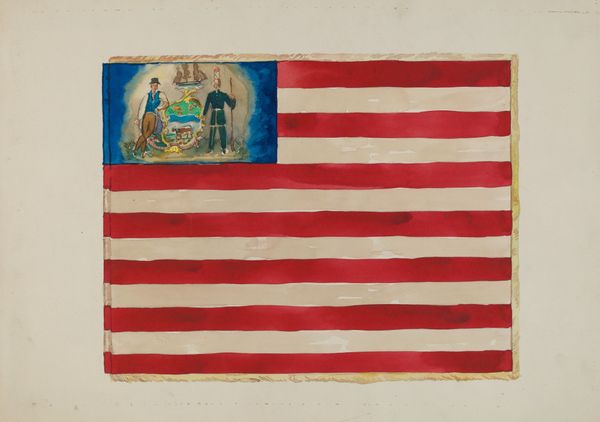
United States, from the National Flags series (N195) issued by Wm. S. Kimball & Co. 1891
Dimensions: Sheet (trimmed): 3 11/16 × 2 3/8 in. (9.3 × 6.1 cm)
Copyright: Public Domain
Curator: Looking at this small lithograph, printed in 1891, from a series of national flags issued by Wm. S. Kimball & Co. It's a fascinating piece of ephemera that was originally distributed as a trade card in cigarette packs. What strikes you about it? Editor: I'm immediately drawn to the way the American flag is depicted. It’s a straightforward rendering, of course, but seeing it paired with an advertisement for “Mechanic’s Long Cut” tobacco, the relationship between national identity, labor, and consumer culture is immediately foregrounded. There is something discomforting in it that I can’t quite explain. Curator: Precisely! These cards were incredibly popular, serving not just as advertisements but also as collectables that reinforced national identity and ideals. But that idea of "Mechanic's Long Cut" specifically catered to a very specific working-class male demographic, and that association tells us a great deal about the intended consumer base of these tobacco products at that particular moment in American history. Editor: Exactly. It's about defining who gets to participate in this vision of "America." Who is being spoken to? And more importantly, who isn't? These were times when race and class dictated inclusion or exclusion from these narratives. It’s also worth mentioning the problematic aspect of commodifying the flag, the blatant marketing using symbols of nationhood. Curator: Yes, and consider how mass-produced imagery like this shapes perceptions. Trade cards like this became visual tools in constructing collective memory and shaping the image of America. They offered consumers a glimpse into this manufactured, idealized world and perpetuated a message through everyday interactions. The subtle power of advertising like this should never be underestimated! Editor: Definitely. The idealized version of nationhood conveniently sells the idealized version of the workingman taking his down time with, implicitly, his right to these consumables. Curator: So, looking at this trade card allows us to look through different aspects of historical significance and it allows us to evaluate the cultural and social factors and it has shaped the way the American identity itself has come to be regarded. Editor: And prompts questions about accessibility, consumerism and whether anything is off limits to commodity culture.
Comments
No comments
Be the first to comment and join the conversation on the ultimate creative platform.
